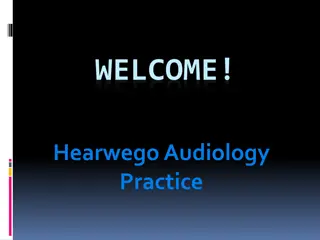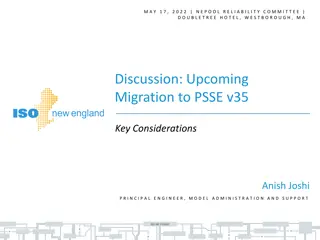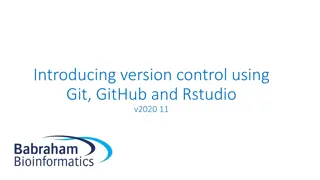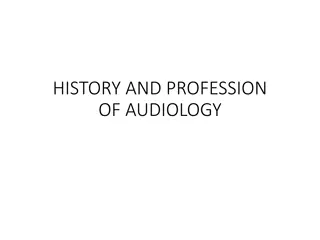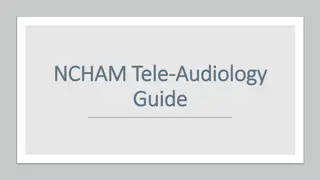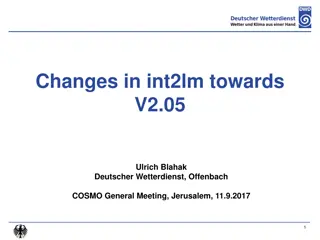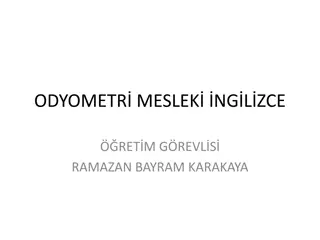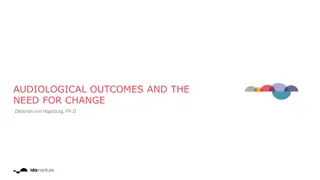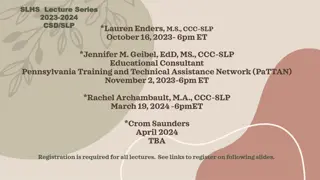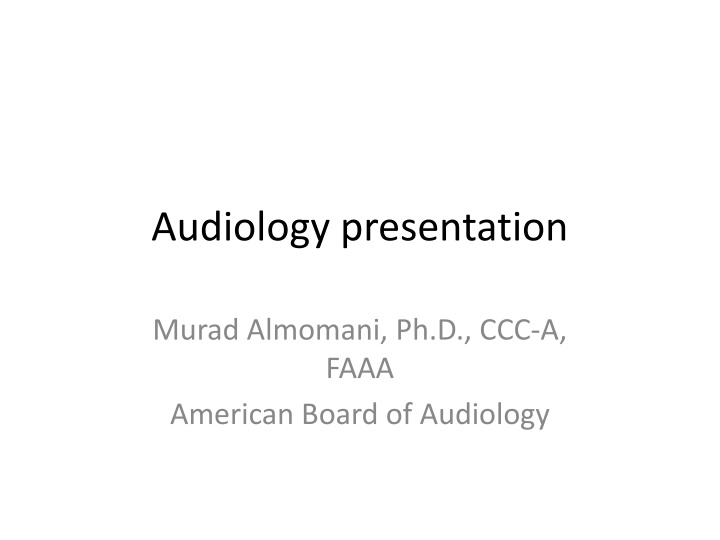
Comprehensive Guide to Audiology: Types of Hearing Loss, Assessments, and Treatments
Explore the world of audiology with a detailed presentation by Dr. Murad Almomani, covering topics like identifying hearing loss types, understanding tympanometry, OAE, ABR, and speech audiometry, and recognizing ranges of hearing loss severity. Discover images depicting normal hearing, conductive, sensorineural, and mixed hearing loss, as well as audio gram and tympanometric features. Enhance your knowledge in audiology and gain insights into various aspects of hearing health.
Download Presentation

Please find below an Image/Link to download the presentation.
The content on the website is provided AS IS for your information and personal use only. It may not be sold, licensed, or shared on other websites without obtaining consent from the author. If you encounter any issues during the download, it is possible that the publisher has removed the file from their server.
You are allowed to download the files provided on this website for personal or commercial use, subject to the condition that they are used lawfully. All files are the property of their respective owners.
The content on the website is provided AS IS for your information and personal use only. It may not be sold, licensed, or shared on other websites without obtaining consent from the author.
E N D
Presentation Transcript
Audiology presentation Murad Almomani, Ph.D., CCC-A, FAAA American Board of Audiology
Outline Students will be able Identify type, degree and configuration of hearing loss. Identify possible site of lesion for each type of hearing loss. Determine middle ear function from Tympanometry measurement. Understand origin, indications and clinical applications of OAE, ABR and speech audiometry.
Ranges of Hearing Loss -10 25 dB HL = Normal range 26 40 dB HL = Mild hearing loss 41 55 dB HL = Moderate 56 70 dB HL = Moderately Severe 71 90 dB HL= Severe Greater than 90 dB HL = Profound
TYMPANOMETRIC FEATURES Tympanometric shapes. Static acoustic admittance. Tympanometric width (gradient). Tympanometric peak pressure. Equivalent ear canal volume.
Static Compliance (Peak Compliance) Acceptable Range by Age Flaccid: disarticulation, flaccid TM, etc. 0.9 1.4 Normal mobility Stiff: otosclerosis fluid, tympanosclerosis, etc. 0.2 0.3 Child Adult
Origin of OAE Initially reported by Kemp in 1978. OAE are considered a by-product of sensory OHCs transduction and represent cochlear amplifier that thought to be as a result of the contraction of OHCs in synchrony with BM displacement. The contraction of the OHCs (movement) is then propagated outward toward the middle ear and moves the TM. This in turn creates acoustic energy that is picked by the OAE probe.
Origin of OAE Initially reported by Kemp in 1978. OAE are considered a by-product of sensory OHCs transduction and represent cochlear amplifier that thought to be as a result of the contraction of OHCs in synchrony with BM displacement. The contraction of the OHCs (movement) is then propagated outward toward the middle ear and moves the TM. This in turn creates acoustic energy that is picked by the OAE probe.
Clinical applications of EOAE 1- can be used in newborn hearing screening. The results will indicate either fail or pass. Fail means that hearing thresholds are worse than 30 dB HL. Pass results means hearing thresholds are 30 dB HL or better. So, we can not use this tool to measure threshold of hearing.
Applications of OAE TEOAE can be recorded in all non-pathologic ears that do not display hearing loss of greater than 30 dB. OAE can be recorded in both adults and infants. Accordingly TEOAE and DPOAE can be used to screen for hearing loss in infants. DPOAE provide more frequency specific evaluation that TEOAE.
Clinical applications of EOAE 2- in differential diagnosis of hearing loss (site of lesion). This can help in differentiating sensory from neural hearing loss. 3- monitoring of the effect of ototoxicity or noise exposure. 4- although still under research: DPOAE can be used to screen for the carriers of the recessive hearing loss genes: many studies found that DPOAE is larger (especially at high frequencies) in carriers than in non carriers when using f2/f1 of 1.3 and low stimulus levels of 50-60 dB.
clinical limitations Problems because of middle ear disease Not sensitive for neonates within 24 hours of birth Results affected by test conditions Noise Not a test of hearing- limited application
Clinical applications of ABR Murad Almomani, Ph.D., CCC-A, FAAA
The normal ABR waveform Is characterized by 5-7 peaks. Occurs in a latency epoch of 1.4 8.0 ms. Responses are usually displayed with positive peaks reflecting neural activity toward the vertex. These peaks are labeled with the roman numerals I through XII. The most prominent waves are I, III, and V.
Example Normal Hearing 18 Month-Old 2000 Hz Tone-Burst 70 dBnHL 10 dBnHL
Example Normal Hearing 18 Month-Old 2000 Hz Tone-Burst 70 dBnHL 10 dBnHL
Using ABR to estimate hearing thresholds Can be obtained by progressively decreasing intensity of the stimulus (click or toneburst) and observing wave V. The last intensity that wave V appears at is considered its threshold. ABR threshold is within 10-20 dB from the subjective threshold.


